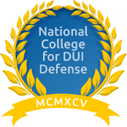- DUI
- Criminal Defense
- Florida DUI
- Traffic Offenses
- Drug Charges
- Marijuana Charges
- Violent Crimes
- Domestic Violence
- Temporary Injunctions
- Weapons Charges
- Theft Crimes
- White Collar Crime
- Juvenile Offenses
- Sex Crimes
- Violation of Probation
- Early Termination of Probation
- Seal or Expunge Criminal Record
- Criminal Appeals
- US Federal Offenses
- Misdemeanor Charges
- Felony Charges
- Co-Defendant Cases
- College Student Defense
- College Student Hearings
- FSU Students
- FAMU Students
- Florida Panhandle Arrests
- Extradition to Florida
- Bench Warrants / Warrants
- Emergency Bond Hearings
- Gambling Charges
- Drone Arrests
- Marsy’s Law
- UAS Infractions
- Introduction of Contraband
- Lying to Police
- Locations
- Case Results
- Our Firm
- Media
- Resources
- Blog
- Contact Us
How DNA Technology Has Evolved in Criminal Law
May 29, 2023 Don Pumphrey, Jr. Criminal Defense Social Share
Nearly every cell in the human body contains deoxyribonucleic acid, or DNA. Since its first use in the 1980’s, DNA technology has revolutionized the science of crime detection. The evolution of DNA technology and methods of obtaining and analyzing DNA evidence is used in criminal law to convict those who have committed a crime or exonerate those who did not.
This page will provide information on the first use of DNA technology in the legal field, new methods of DNA testing, and how DNA evidence impacts a criminal case.
First Method of DNA Technology in Criminal Law
The first method of DNA technology was DNA profiling. DNA profiling is the process of determining a specific DNA pattern, or “profile,” that is obtained from a person or sample of body tissue. The procedure is used to help identify individuals based on their unique, genetic makeup.
The Restriction Fragment Length Polymorphism (RFLP) method was first introduced in 1984 by British geneticist Sir Alec Jeffreys. RFLP is used to analyze the unique patterns in DNA fragments to genetically differentiate from other organisms. The method involves analysts cutting the DNA into fragments and placing them in a special gel to compare to other samples.
The first successful use of DNA profiling in a criminal case took place in 1986. The method was used to solve a double murder that took place in the U.K. In 1987, Florida defendant Tommy Lee Andrews became the first person in the U.S. to be convicted of a crime based on DNA evidence. His DNA profile matched the traces of semen recovered from the victim, which led to his sexual battery conviction.
Since then, law enforcement across the globe has implemented DNA fingerprinting as a valuable tool in criminal investigations.
Detection of Human DNA in the Air
DNA is not only found on us, but all around—even in the air. In a 2022 study by the Forensic Science International: Genetics Supplement Series, researchers discussed the possibility of DNA fragments from the air being used for human identification in criminal cases.
The researchers collected aerosol DNA by using the AirPrep™ ACD220—a device that collects filtered air samples from indoor environments. From the study, a new method of extracting human DNA from air filters was developed.
The study concludes that human DNA traces can be collected from the air and provide short tandem repeats (STR) genotypes of a person who has recently been inside the specific room. STRs are the current ‘gold standard’ for generating a DNA profile to upload onto national DNA databases.
In its conclusion, the study states it aims to establish the inclination of detectable aerosolized human material, from innocent people, to spread at the crime scene.
You can view the entire study here.
New Possibilities with eDNA
While aiming to study endangered sea turtles, University of Florida Professor David Duffy and his colleagues published a study on eDNA and its potential use for identifying humans.
Prior to the May 2023 study, environmental DNA (eDNA) had been used in a range of biological monitoring applications, for studying and managing wildlife populations. More recently, eDNA has been applied to both animal and human health—tracing pathogen, parasite, and pollen monitoring. Researchers have been able to obtain eDNA from sample types including:
- Air
- Soil
- Terrestrial and Aquatic Sediments
- Marine Water
- Freshwater
- Wastewater
- Permafrost
- Snow
- Ice Cores
The study claims that there is the potential for large volumes of human eDNA being retrieved. This potential includes sufficient data to both identify and phenotype (observing the characteristics in an individual from their expression of genes) human individuals. However, the new method could provide difficulties with legal and ethical frameworks, since obtaining genetic data from identifiable persons requires informed consent.
Admissibility of DNA Evidence
The first time the admissibility of DNA evidence was challenged in the U.S. was during the 1989 case of Jose Castro. A blood stain on the defendant’s watch was matched to the victim but was not the instrument to his conviction. Instead, he was convicted due to his confession of the crime.
But there were issues with the investigation of DNA evidence. There were no specific tests for human blood in the DNA tests conducted by Life Code Corporation. There was also a lack of blind testing protocols, which may have been due to an attempt to link the blood stain to the victim. In addition, the laboratory which ran the DNA tests allegedly used contaminated probes and failed to provide any documentation relating to the testing.
As a direct result of Castro’s case, the court issued direct guidelines on how to complete DNA testing in a criminal case. This included specific rules on the testing procedure, maintenance of lab results and reports, and probability calculations of observed defects or errors in the laboratory.
A 1996 report by the U.S. National Research Council (NRC) on DNA evidence stated the following:
“The state of the profiling technology and the methods for estimating frequencies and related statistics have progressed to the point where the admissibility of properly collected and analyzed DNA date should not be in doubt.”
When properly conducted and applied, DNA is routinely used in criminal cases as admissible evidence. However, improper use or application of DNA scientific techniques have been denounced.
How Does DNA Impact a Criminal Case?
Since its inception into the legal field, DNA evidence has played a significant role in criminal cases. Some of the most important uses of DNA evidence in the criminal justice system include:
- Identifying suspects – When DNA evidence is collected from a crime scene, it can be compared to DNA samples from any suspects or DNA evidence on an alleged victim. Matching DNA can provide convincing evidence for the defendant’s conviction.
- Excluding suspects – On the other hand, DNA evidence can be used to exclude a person who is suspected of a crime. This is also done by matching DNA samples from the defendant to the DNA found on the victim or at the crime scene.
- Corroboration of other evidence – DNA evidence helps in supporting or corroborating other types of evidence, such as eyewitness testimony or physical evidence.
- Cold Case investigations – A cold case is an unsolved criminal investigation (like a homicide or abduction) which has stopped being actively pursued due to lack of evidence. DNA technology can help solve cold cases if the DNA evidence has been stored or preserved and can potentially lead to the identification of suspects who may have previously gone undetected.
- Post-Conviction Exonerations – Unfortunately, there are instances where a defendant is convicted of a crime they did not commit. DNA evidence has played a crucial role in exonerating individuals who were wrongfully convicted of a crime. You can read an example of a post-conviction exoneration from DNA evidence in our blog post here.
It is clear the DNA evidence impacts criminal cases in a big way. Just as it can convict a person of a crime, it can also help exonerate someone who has wrongfully been accused of a criminal offense. If you are facing criminal charges and need legal help, contact a Tallahassee defense attorney today.
To find out more about how DNA samples work as incriminating evidence, read our blog post here.
Contact a Tallahassee Criminal Defense Attorney
If you or someone you love has been accused of a crime in Florida, prioritize speaking with a defense attorney as soon as possible. Depending on the specific charge or circumstances of your case, you may be facing expensive fines and imprisonment if you are convicted. The best way to protect yourself and your future is to work with a skilled attorney who is ready to fight on your behalf.
Don Pumphrey and his team have spent years representing Floridians who have been accused of a crime. We are extremely knowledgeable in the legal field and can help answer any questions or concerns you may have. To discuss the specific details of your case, contact Pumphrey Law Firm today for a free consultation at (850) 681-7777 or leave us a message our website.
Written by Karissa Key










